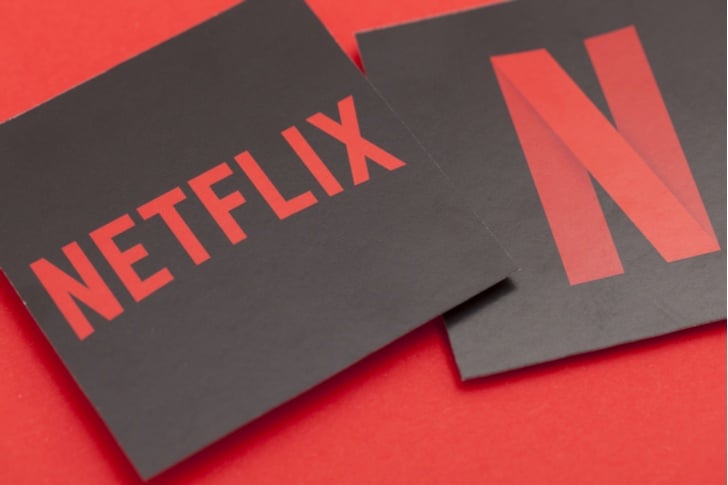We all know the narrative. Streaming giant Netflix (NASDAQ:NFLX) is pioneering a new era of over-the-top (OTT) media consumption which is killing linear media consumption. As a result, Netflix’s subscriber base is burgeoning, and cable is dying.
But, while many of us accept this as a reality of the present entertainment industry, I also think that many of us also under-appreciate the magnitude of this mega-trend. That is why I’d like to emphasize one very important number which underscores just how bright Netflix’s future is.
70%.
That is how much less cable television young consumers watch than their older counterparts. Specifically, according to Nielsen data from the first quarter of 2018, 18-to-34-year-olds watched two hours and 17 minutes of television per day (137 minutes).
In the cohort ages 65 and up, daily cable television consumption ran around seven hours and 34 minutes per day (454 minutes). That means that people ages 65 and up watch more than three times as much cable television as 18-to-34-year-olds.
You can blame some of that on retirement. The 65-and-up cohort presumably has much more free time than the 18-to-34 cohort. But, that doesn’t explain the full picture. Instead, the big story here is that internet media consumption is actually wholesale killing linear media consumption.
That implies a promising future ahead for Netflix and NFLX stock, regardless of competition headwinds.
A New Era of Media Consumption
There is no doubt about it. We have entered a new era of media consumption.
Phones are starting to look a lot like televisions, and apps are starting to look a lot like television shows. The new generation of smartphones all include edge-to-edge display, much like the new generation of televisions all have edge-to-edge display, too.
Concurrent to this trend, the new generation of apps (think Stories) are all emphasizing edge-to-edge visual displays with a writing overlay. That is almost identical to the setup of TV news channels.
In other words, phones are becoming the new TV. Because of this, younger audiences are now consuming visual media through applications that are built for smartphones and other smart devices.
Just look at the list of the most-used smartphone apps among U.S. teenagers. The top-three most-used apps by far and away (YouTube, Instagram and Snapchat) are all visual-heavy platforms with a suite of TV show-like offerings.
Put this together with the fact that 18-to-34-year-olds watch 70% less cable television than those 65 and up, and not only does the trend become obvious, but the magnitude becomes obvious, too. The shift from linear to internet media consumption is a mega-trend that is taking over the United States. Eventually, it will take over the world, as well.
That means that Netflix’s future is very bright.
Netflix Positioned as the Leader
While Netflix isn’t one of the most-used smartphone apps among U.S. teenagers, the platform is still considered the leader in internet media consumption. According to Piper Jaffray’s semi-annual Taking Stock With Teens
survey, Netflix ranks above both YouTube and cable TV in terms of daily video consumption.
Netflix’s leadership position is only growing. The company continues to produce dozens of original-content films and TV shows every quarter.
The sum of that original programming constitutes the company’s competitive moat. That competitive moat is something that Netflix will need to rely heavily on in the foreseeable future, when bigger players like Disney (NYSE:DIS) make a push in the streaming space.
Regardless of that competition push, my thesis on Netflix has always been very simple. The linear-to-internet media consumption mega-trend is so big that it will allow for multiple winners in this space. From this perspective, Disney, Netflix and a handful of other OTT platforms can and will be successful side by side, so long as those platforms offer distinct content.
Let’s use the hypothetical John as an example. John currently subscribes to cable, which he is paying $100/month for (the national average price). John also has a Netflix account. That runs him around $10/month. Therefore, he is paying around $110/month for at-home entertainment consumption.
Now, let’s say John cuts the cord on cable and keeps Netflix. Let’s say he gets his regular programming through an OTT service like YouTube TV ($40/month) and gets his movie fix from Disney streaming (which will presumably run around $8/month). Let’s also say he wants to throw in something extra, and signs up for HBO NOW ($15/month).
John will get everything he got with cable, plus HBO, at just $73 per month. That is more than 30% less than his cable and Netflix combined cost.
I think most people will end up following in John’s footsteps. The implication here is that more competition in the OTT space won’t kill Netflix. Rather, it will simply accelerate cable’s decline.
Bottom Line on NFLX Stock
Netflix stock is supported by a powerful long-term growth narrative. I have trouble getting behind the stock at over $360 for valuation reasons. But, I do think that this stock will head way higher in a long-term window due to the mega-trend supporting increased adoption of internet media services.
As of this writing, Luke Lango was long DIS.

